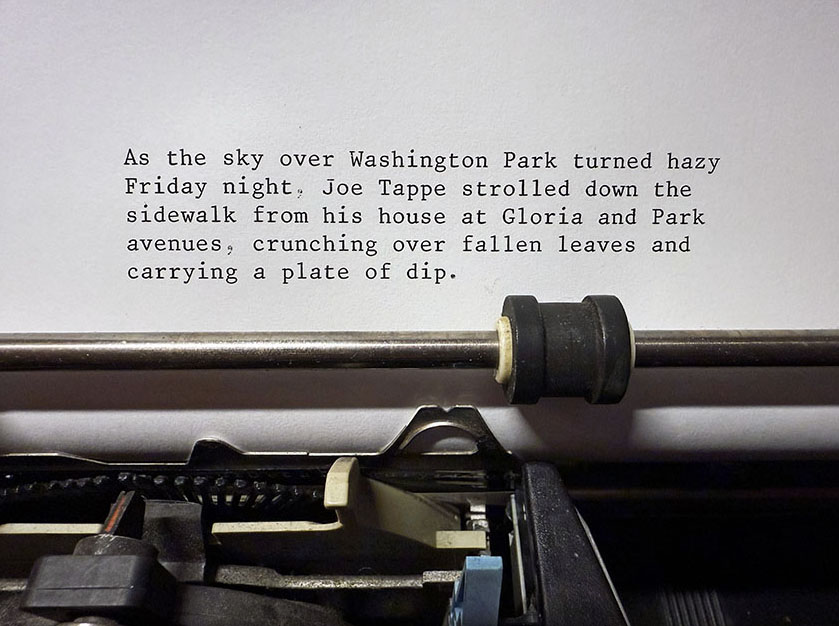
Roger Penrose, Oxford mathematician and physicist, in 2011. Penrose will be 94 years old in August. Source: Wikimedia Commons.
First, a note on how I use AI
My writing is always my own. I never use AI as a writing tool. When I use AI for research, I will always say so. Occasionally, as with this post, I may post, or quote from, a report written by an AI. When I do that, I will attribute the report appropriately and say which particular AI wrote the report.
What is Orch-OR, and why does it matter?
What kind of universe do we live in? Is it cold and mechanical? Purely material? Or is there something spooky, even magical and caring, about the universe?
This is a scientific question now, though in the past it was a religious or philosophical question. Philosophy is helpful and can discipline our thinking, though ultimately philosophy cannot provide the answers that only science can provide. As for religion, it might have been useful to the ancients. But for us today, two-thousand-year-old ideas about the nature of the cosmos are primitive, useless, and misleading.
People often assume that scientists are all materialists. That is not the case. The development of quantum physics during the 20th Century did much damage to a material, mechanical view of the universe. Many scientists saw cracks in the doors of physics through which spooks could enter. It became hard to deny that there is something immaterial about the cosmos — though scientists could not make sense of it: Erwin Schrödinger, Wolfgang Pauli, Arthur Eddington, Albert Einstein, Eugene Wigner, Roger Penrose, David Bohm, Max Tegmark.
Rooting for the spooks
It was Albert Einstein who first used the word “spooky.” He described quantum entanglement as “spooky action at a distance.” This troubled him greatly, though he had to recognize it. His guess was that there must be “hidden variables.” Many physicists have gone looking for such hidden variables, but whether they exist remains unproven.
So: Is the cosmos cold and indifferent, morally irresponsible, devoid of meaning, completely uncaring about good and evil and suffering? Or is the cosmos more than that?
Roger Penrose is almost certainly the Einstein of our time. Here is what Penrose had to say, as quoted in the Wikipedia article on Penrose:
“I’m not a believer myself. I don’t believe in established religions of any kind. … I think I would say that the universe has a purpose, it’s not somehow just there by chance … some people, I think, take the view that the universe is just there and it runs along — it’s a bit like it just sort of computes, and we happen somehow by accident to find ourselves in this thing. But I don’t think that’s a very fruitful or helpful way of looking at the universe, I think that there is something much deeper about it.”
Consciousness
The open door for spooks was just a crack for most of the 20th Century. Roger Penrose’s theory of consciousness throws the door wide open. ChatGPT 4.1 describes Penrose’s view of the nature of consciousness thus: “In this framework, the universe is not dead matter plus consciousness emerging later, but rather, proto-conscious events are woven into the very fabric of physical reality, occurring wherever quantum collapses happen.”
The standard theory of consciousness today is that consciousness is an electrical phenomenon that happens in the neurons of the brain. There is no proof of that! Rather, it’s a materialist theory and assumes that it couldn’t be anything else, that consciousness somehow just emerges in a neural network that is complex enough.
Penrose thinks otherwise. Penrose, in collaboration with the anesthesiologist Stuart Hameroff, thinks that consciousness is a quantum, rather than an electrical, phenomenon — that is, our brains are like quantum computers. The Penrose-Hameroff theory proposed thirty years ago that consciousness is generated by quantum effects in the tiny microtubules that provide structure to neurons. They call the theory Orch-OR (orchestrated objective reduction). During the past thirty years, many scientists have tried to shoot down the theory. None have succeeded. In fact I think it is fair to say that recent findings have tended to support, rather than weaken, the Orch-OR theory.
For assessing the spookiness of Orch-OR, it’s important to keep in mind that the theory doesn’t just propose that a human mind is a very fine, but isolated, quantum computer. Because of quantum entanglement — spooky action at a distance — Orch-OR also opens the door to the possibility that human consciousness can somehow connect with the larger cosmos. Yes, of course — religions and philosophies have long proposed such a thing. Orch-OR has proposed an actual mechanism that can be scientifically investigated.
For years I have tried to keep up with the ongoing research into the validity (or lack of validity) of the Orch-OR theory. I have found that an AI can be a huge help with this. I used the “agent” function of ChatGPT 4.1 to generate the report below. If you’re interested in this subject, you may find the links at the end of the report interesting and more accessible than the difficult science involved in investigating the Orch-OR theory.
Research on the Penrose–Hameroff “Orch‑OR” Theory of Consciousness (Updated July 2025, ChatGPT 4.1 agent.)
Background and Goals of the Theory
The orchestrated objective reduction (Orch‑OR) model, developed by Roger Penrose and Stuart Hameroff, posits that consciousness arises from quantum processes within microtubules (MTs) inside neurons. The theory proposes:
- Quantum states in microtubules enable non-algorithmic computation, fundamental to conscious experience.
- “Objective reduction” (OR) occurs when a quantum superposition reaches a critical threshold, governed by gravitational effects (as per Penrose’s interpretation of quantum mechanics).
Recent Supporting Research (2023–2025)
-
Microtubule Quantum Superradiance & Excitons:
-
Babcock et al. 2024 (Quantum Brain Dynamics): Demonstrated that microtubules can support collective quantum states (superradiant excitonic states) theoretically, with room-temperature persistence in simulated systems.
-
Oblinski et al. 2023 (Electronic Energy Migration in Microtubules): Experimental results show energy migration over ~6.6 nm in microtubules, reduced by anesthetics. This suggests microtubule quantum effects are sensitive to anesthetics, aligning with predictions of Orch‑OR.
-
Entanglement in the Brain:
-
Kerskens & Perez, 2022 (Phys.org coverage): MRI experiments reported non-classical “entanglement-like” correlations in human brains. The results are provocative but have been questioned due to interpretational ambiguity.
-
Saxena et al., 2020–2023: Experiments with isolated microtubules show scale-free resonance and long-range correlations. These suggest that microtubules may act as “fractal antennas,” supporting information integration.
-
Myelin Quantum Effects:
-
Grigoryan et al. 2024 (arXiv): Predicted generation of entangled biphoton states in the myelin sheath. Not yet confirmed in vivo.
-
Superradiant UV Emission:
-
Celardo et al., 2019–2024: Theoretical work on collective photon emission (“superradiance”) from tryptophan in microtubules, and observed long-lived room-temperature delayed luminescence, but direct link to consciousness is still debated.
Major Criticisms and Falsification Efforts
-
Decoherence Objection:
-
Tegmark (2000), Reimers et al. (2009), McKemmish et al. (2009): Calculated that any quantum state in microtubules should decohere (lose quantum character) in femtoseconds—far too fast for neural timescales or consciousness.
-
Penrose & Hameroff response: Argue that ordered water, tubulin geometry, and shielding effects can prolong coherence, and that certain experiments (superradiance, delayed luminescence) hint at greater stability than previously believed.
-
Collapse Model Experiments:
-
Diósi–Penrose (DP) collapse tests (Carless et al. 2021–2023): Underground experiments seeking “spontaneous radiation” predicted by objective reduction. No positive signals detected yet; does not strictly falsify Orch‑OR but narrows parameter space.
-
McQueen (2023): Critiques that many “collapse” experiments do not target Orch‑OR’s core biological mechanisms, and Penrose himself has noted most such tests are not definitive.
-
Failure to Replicate & Biological Plausibility:
- Some key experiments on microtubule resonance and delayed luminescence have not yet been widely replicated. Others find evidence of energy transfer, but not quantum computation.
-
McKemmish et al. (2009): Argue there is no known mechanism to “protect” microtubules from environmental decoherence within neurons.
-
Lack of Unique Predictions: Many neuroscientists and philosophers remain skeptical, arguing that Orch‑OR’s predictions are not unique or distinguishable from other neural theories of consciousness.
Penrose & Hameroff’s Responses
- They emphasize new evidence for quantum effects in biological systems (photosynthesis, avian magnetoreception, possibly microtubules) has eroded old “impossibility” claims.
- Point to experiments showing that anesthetics disrupt microtubule energy transfer, not just synaptic activity, supporting a microtubule-based substrate for consciousness.
- Welcome further “collapse” experiments and assert that any conclusive falsification would require demonstrating the impossibility of quantum computation in microtubules at physiological conditions.
Trajectory and Current Assessment
-
Supporting Evidence Trajectory:
- There is growing experimental evidence of nontrivial quantum phenomena in microtubules (superradiance, energy transfer, delayed luminescence), though not yet direct evidence of quantum computation or OR events in vivo.
- Entanglement-like effects in brains and myelin remain controversial, with interpretation and replication still pending.
- Recent preprints (Mavromatos et al., 2025) propose microtubules as “QED cavities” with high-Q quantum states, but these are still theoretical.
-
Falsification Trajectory:
- No clear-cut experiment has yet falsified Orch‑OR; most challenges concern decoherence timescales and lack of unique empirical predictions.
- Some collapse models are now strongly constrained by negative results, but Penrose and Hameroff maintain their version is not ruled out.
Key References & Further Reading

















